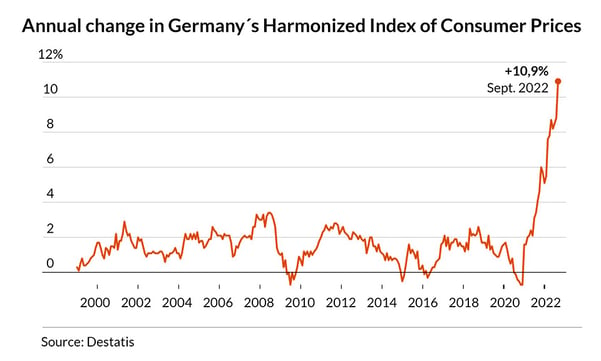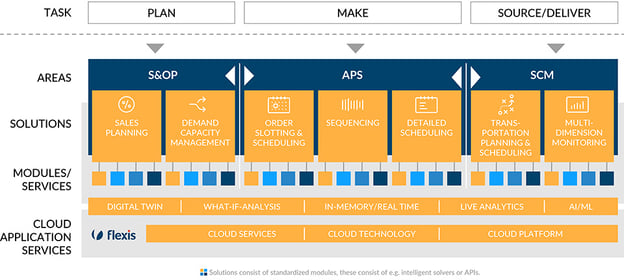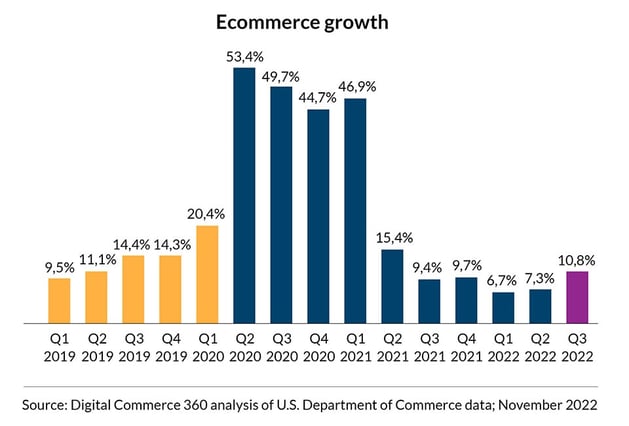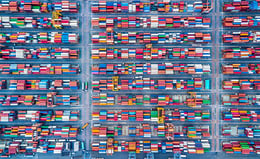Top Solutions for the Top Supply Chain Priorities in 2023
Keith LaBotz - January 12, 2023

Will 2023 be the year of opportunity or failure for your company’s supply chain?
Gartner’s Top 10 Strategic Predictions for 2023 and Beyond present 2023 as a year of economic uncertainty and opportunity. “The theme of this year’s predictions is ‘seize uncertainty,” says Gartner’s Daryl Plummer, VP Distinguished Analyst and Gartner Fellow. He adds, “uncertainty is a repository for ‘hope’ — for opportunity.”
Sounds promising, but how can your company transform uncertainty into opportunity? Gartner emphasizes two conditions for making that happen:
- Organizations must let go of old ways of thinking and;
- Fuse digital technologies that increase operational agility with business strategy.
That’s more than just good advice - it’s imperative for digital transformation and long-term business viability. However, over the past two years, a focus on short-term viability relied on digital solutions for counteracting volatility. Urgency took precedence over importance; consequently, the prospect of digital transformation is at an inflection point for many companies.
This year's big challenge isn’t macroeconomic and geopolitical uncertainty but advancing digital transformation while mitigating these risks. Companies must align digitization efforts with the two conditions above before they diverge and prevent it.
This article gives you four priorities with solutions that will put digitization efforts on the right track in 2023 and turn it into a year of opportunity for your supply chain.
1. Verify Digital Transformation
According to McKinsey, BCG, KPMG, and Bain & Company, 70% to 95% of digital transformations fail, and with business viability depending on it and odds favoring your company’s failure, verifying digitization is transforming supply chain business processes is the top priority.Most companies can’t distinguish digitization or digital solutions from digital transformation, and that’s a must before verification is possible. If that describes your company, a few definitions are in order:
- Digitization automates processes with digital solutions.
- Digital transformation restructures networks to optimize the outcome.
- Digital solutions are implemented across networks to create a collaborative approach for all participants (supply chain partners).
Textbook definitions are a start, but replacing the legacy process requires a clear vision of the future supply chain, and that’s where Gartner’s emphasis on new ways of thinking comes in. The goal is to imagine a new model that restructures supply chain processes, and it might include some thoughts like:
- Understanding your company’s processes from the outside perspective, as external supply chain partners and customers see it. In contrast, the traditional view focused on enterprise processes and treated the supply chain as a separate network outside the four walls.
- Your company’s business enterprise is a node on the more extensive network of supply chain partners.
- Split and rearrange vendors, suppliers, workflow, and data collection into new processes.
- Build the supply chain process using your company's visions and find vendor solutions that support it; do choose point solutions and then integrate them into an ad-hoc process or digital twin. That said, adopt and refine any vendor’s solution and vision if it’s superior to your company’s.
- Evaluating digital solutions from the perspective of supply chain partners; how each solution meets their requirements and objectives.
- Viewing the supply chain as a collaborative transportation process and every business function as an integral part of it.
Focusing on transportation process improvements is the most effective way to change your thinking, visibly transform supply chain processes, and verify whether digital solutions transform the supply chain. You can learn more about it by reading A Super Simple Supply Chain Model and Digital Supply Chains: How to Avoid the Hidden Risks.
2. Minimize Costs With Agile Solutions
With the number one priority addressed, your company is ready to tackle the top economic concern for 2023: rising prices. The chart below says everything, and the need to protect profitability by minimizing costs requires no explanation.

Currency inflation is the byproduct of a historic monetary experiment with unknown consequences. Regardless of how the story ends, its crucial solutions today increase supply chain agility so your company can adapt to all possible outcomes.
The most effective path forward for agile cost reductions is focusing on transportation improvements. You can learn more by reading The Best Supply Chain Recipe for Winning with Inflation.
3. Restructure Supply Chain Networks
Restructuring physical and digital supply chain networks maximize agility, savings, and risk mitigation. The material supply chain includes production and logistics assets like warehouses, transportation fleets, and distribution sites.
Relocating to new sites, suppliers, and vendors is the physical manifestation of digital transformation, and it enables supply chain processes to achieve their full potential. Benefits include:
- Reduce geopolitical and macroeconomic risks.
- Minimize supply chain transportation costs and risks.
- Achieve sustainability goals by lowering transportation emissions.
- Improve last-mile logistics and delivery.
- Strengthen reverse logistics for returns, warranty service, and recycling.
Of course, these gains depend on economical, reliable transportation for the products, shipping volumes, and modes of transport required in the new locations. Transportation costs are a crucial part of analyzing distribution scenarios and site locations, and capable software is needed.
As transportation networks reorganize to support widespread restructuring, the adjustments will likely bring volatility. The usual bankruptcies and downsizing of fleets during a global recession will only make it more acute.
Transportation volatility will present opportunities for companies utilizing transportation forecasting and planning tools, which tightly integrate with supply chain management functions. Furthermore, scenario planning for identifying potential site locations requires these tools. The best solutions fully integrate S&OP, and APS with transportation planning, like the flexis suite of apps.

You can learn more about transportation planning solutions for supply chain restructuring by checking out Ten Ways Restructuring Supply Chains Improves Transportation.
4. Restructure Around Last-Mile Logistics
Our first three priorities are restructuring thinking, business processes, and logistics assets. Restructure them around what? That’s what the fourth priority is about - the last mile.
Home delivery volumes experienced steady increases from e-commerce growth for several years before skyrocketing in 2020 -2021 with lockdowns. There are no signs of it letting up, with Q3 2022 e-commerce sales in the US increasing by 10.8%.
 Shippers are well aware they must meet growing customer expectations to remain viable. What many do not yet understand about the so-called “Amazon Effect” is that it’s a wake-up call for supply chains to restructure around last-mile transportation. You can learn more about this by reading What You Need to Know About Amazon’s Supply Chain.
Shippers are well aware they must meet growing customer expectations to remain viable. What many do not yet understand about the so-called “Amazon Effect” is that it’s a wake-up call for supply chains to restructure around last-mile transportation. You can learn more about this by reading What You Need to Know About Amazon’s Supply Chain.
For companies with transportation operations, this means a routing optimization solution that minimizes cost and maximizes last-mile performance. The First Step of the Last Mile is the Most Important will give you more details on how routing optimization improves last-mile logistics.
Conclusion
2023 is a year of opportunity for supply chains that get on track with digital transformation with the four priorities outlined. The suggested transportation solutions make it easier to align digital solutions with the conditions Gartner proposes for transforming uncertainty into opportunity.
I hope these ideas benefit you and your company this year and beyond.
If you want to learn more get your Guide to Logistics 4.0
In this Guide you will learn:
-
Why a strategic process in transportation planning is a top priority for digitalization
-
What megatrends will increase supply chain volatility
-
How to manage it
Want to learn more about Multimodal Transportation?
Download our presentation and learn:
-
How can transports be planned quickly and yet flexible so that CO2 savings are verifiable?
-
How do you make optimal use of a multimodal transport network that maintains supply in both the short and long term?
-
How can you more easily realize a modal shift when disruptions occur? And how do you keep a grip on your CO2 emissions in doing so?
flexis and BigMile present a Use Case of a modal shift and show that network optimizations and sustainability often go hand in hand.
LATEST POSTS
- Understand Circular Economy in The Manufacturing Industry
- How Can Industry 4.0 IT Integration Be Achieved Smoothly?
- The Significance of Order Sequencing in Discrete Manufacturing
- How to improve your Supply Chain Management: The Power of Control Towers
- Optimizing Human Resource Scheduling in Manufacturing: A Technological Approach




